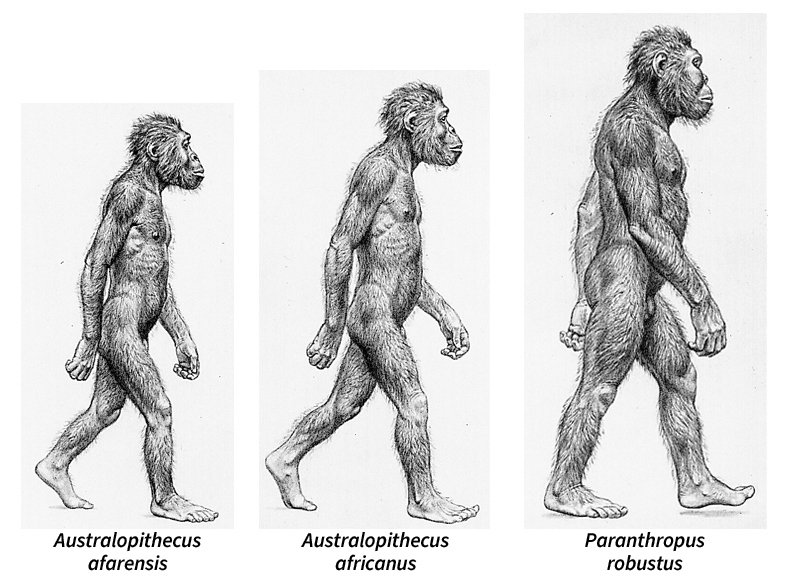Australopithecus afarensis, << AW struh loh PIHTH uh kuhs af uh REHN sihs, >> was an early humanlike creature known in part from a fossil skeleton nicknamed “Lucy.” The creature is known from fossils found in Africa. A. afarensis is one of the oldest members of the genus (group of closely related species) Australopithecus. Scientists classify Australopithecus in the same scientific family as modern human beings and prehistoric humanlike creatures.

The American anthropologist Donald Johanson discovered fossils of this species in 1974 at Hadar, Ethiopia. Johanson found a partial skeleton of an adult female, the famous “Lucy,” in deposits dating to about 3.2 million years ago. Since the early 1970’s, researchers at the Laetoli fossil site, in northern Tanzania, had also found fossilized bones of a humanlike creature that lived 3.6 million years ago. Johanson and his colleagues recognized that the fossils from Hadar and Laetoli belonged to the same species. They named this species Australopithecus afarensis.
The anatomy of Lucy and other A. afarensis fossils shows that the creatures were small but walked upright like humans. They probably stood 3 1/2 to 5 feet (1 to 1.5 meters) tall. The skull of A. afarensis more closely resembles that of an ape than that of modern humans. A. afarensis had a brain about the same size as a chimpanzee brain, a large jaw that projected outward, and very large molars. It had small canine teeth that did not stick out above the other teeth as they do in apes. Lucy also had arms that were longer in proportion to the body than are those of modern people. This characteristic, along with slightly curved toe bones, indicate that A. afarensis was at home in trees. No stone tools have ever been found with A. afarensis.

Scientists think that human beings developed from an Australopithecus ancestor. However, they are not sure whether it is A. afarensis or another species that is the direct ancestor of the first humans.
See also Australopithecus; Prehistoric people (The australopithecines).
